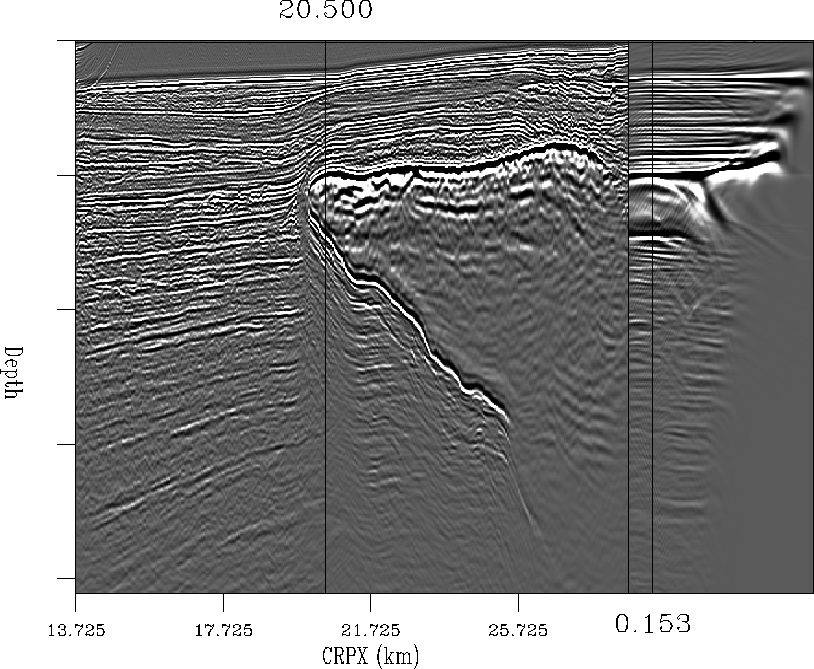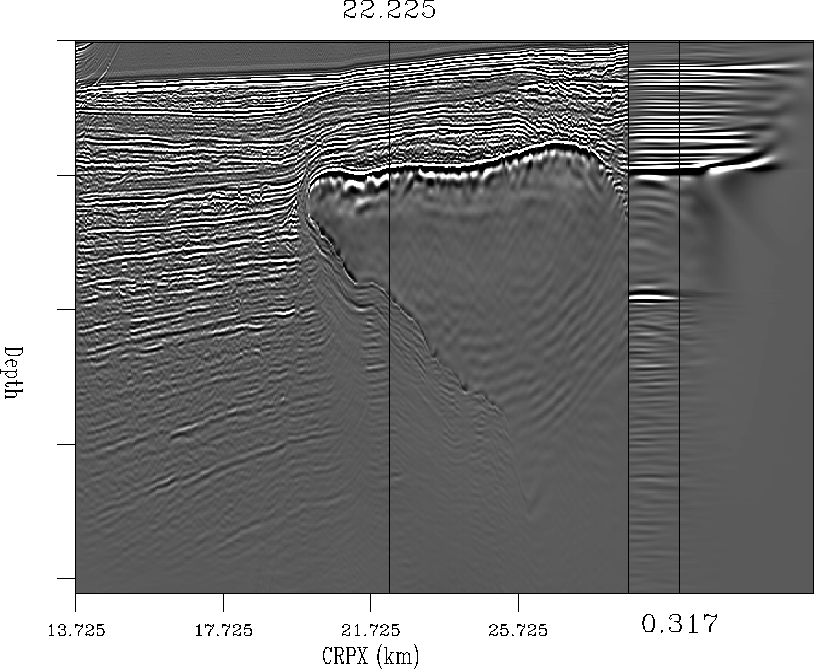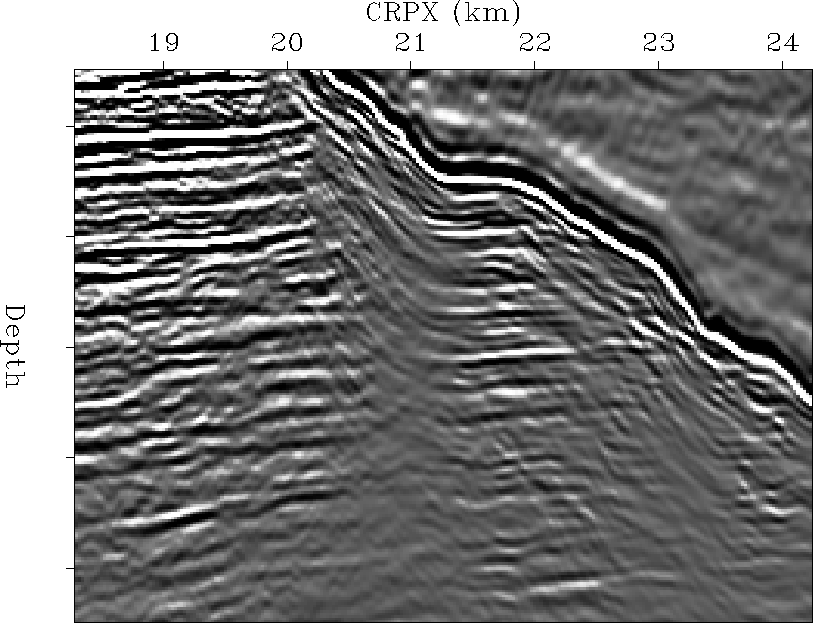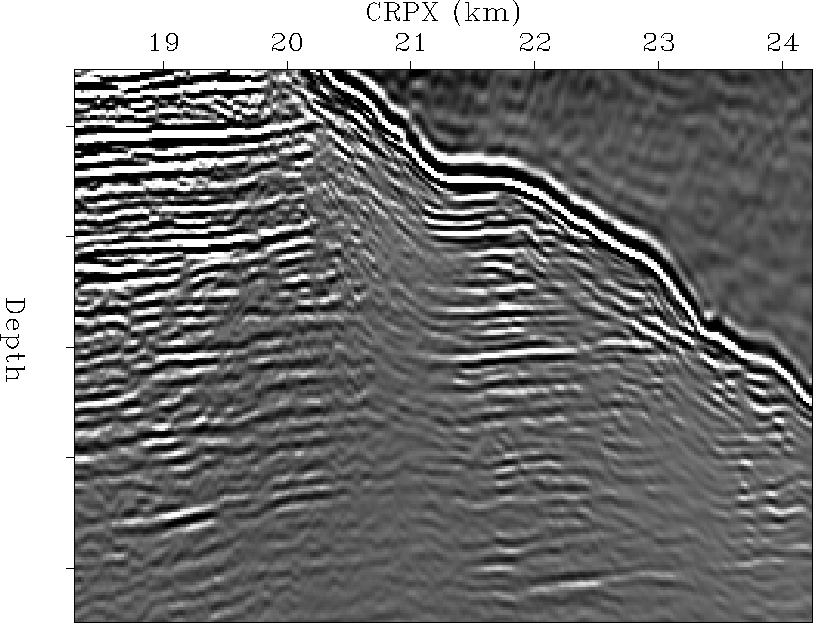|
bpvel
Figure 1 Subset of the BP Gulf of Mexico velocity model. |  |
To demonstrate our 2-D Regularized Inversion with model Preconditioning (RIP), we choose to extract a 2-D line from a real 3-D Gulf of Mexico dataset provided to us by BP and ExxonMobil. A portion of the 3-D velocity model for this dataset can be seen in Figure 1. The velocity model is believed to be accurate, which is important given our choice of regularization operator Clapp (2003).
|
bpvel
Figure 1 Subset of the BP Gulf of Mexico velocity model. |  |
We first performed downward continuation migration on this 2-D line.
The migration results can be seen in Figures 2
and 4. In these figures, the left part shows
a common offset ray parameter section, taken from ![]() and
and ![]() respectively. The right part shows a common
image gather taken from
respectively. The right part shows a common
image gather taken from ![]() and
and ![]() respectively.
respectively.
 |
In Figure 2, note the clear shadow zones visible in the common offset ray parameter section. The poor illumination that causes these shadow zones is manifested in the common image gather as gaps in the events. These gaps are what we hope to fill with our regularization operator.
 |
Figure 3 is the result of 10 iterations of RIP. The common phx section and common image gather correspond to those of the migration result in Figure 2. The inversion process has cleaned up many of the artifacts seen in the migration result. More importantly, the common image gathers show that we are filling the gaps in the events. Our regularization operator is successfully compensating for the illumination problems.
 |
The common phx section shown in the migration result in
Figure 4 and the RIP result in
Figure 5
is interesting. At the CRPX location from which we have extracted
the common image gather (![]() ), we note that the result
after 10 iterations of RIP (Figure 5 is
beginning to show real events beneath the salt that are not visible in the
migration result (Figure 4. The common
image gather shows that we have extended the events in phx, essentially
allowing the inversion image to ``recapture'' energy that left the
survey area. Additionally, as we saw in Figure 3,
the inversion result is cleaner than the migration result.
), we note that the result
after 10 iterations of RIP (Figure 5 is
beginning to show real events beneath the salt that are not visible in the
migration result (Figure 4. The common
image gather shows that we have extended the events in phx, essentially
allowing the inversion image to ``recapture'' energy that left the
survey area. Additionally, as we saw in Figure 3,
the inversion result is cleaner than the migration result.
 |
It is also interesting to stack the migration and RIP results for comparison. Figure 6 shows the stacked migration result and Figure 7 shows the stacked RIP result after 10 iterations. Each of these figures has been zoomed in to concentrate on the poorly illuminated areas under the salt. The RIP stack is slightly higher in frequency content, due to artifacts in the migration result that stack into lower frequencies. More importantly, the RIP stack has improved the imaging of events within the shadow zones. The events extend farther into the poorly illuminated areas, are more continuous, and have more consistent amplitudes.
 |
 |